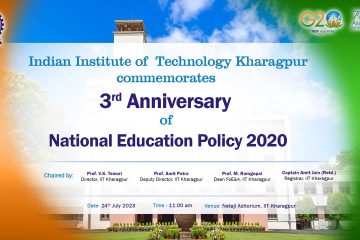 Tomatoes grown with the contaminated water of the Varthur Lake of Bengaluru reach the nearby markets of the city every morning and are bought by unsuspecting city dwellers. Almost a decade of civic activism in Bengaluru has not changed anything for either the farmers or urbanites there. Thousands of miles away, Platypuses, a mammal species commonly found in Australia, happily swim near the coast off Melbourne, unaware that beta-blockers are entering their bodies every day from the ‘safe’ treated water discharged from the city.
Tomatoes grown with the contaminated water of the Varthur Lake of Bengaluru reach the nearby markets of the city every morning and are bought by unsuspecting city dwellers. Almost a decade of civic activism in Bengaluru has not changed anything for either the farmers or urbanites there. Thousands of miles away, Platypuses, a mammal species commonly found in Australia, happily swim near the coast off Melbourne, unaware that beta-blockers are entering their bodies every day from the ‘safe’ treated water discharged from the city.

These were some of the many facts brought to light by the Indo-Australia joint workshop on Integrated Urban Water Management held recently at IIT Kharagpur under SPARC (Scheme for Promotion of Academic and Research Collaboration) program of Ministry of Human Resources and Development, Government of India.
Participants at the workshop included not only faculty and students from IIT Kharagpur and its partner institution, the University of Melbourne, but stakeholders drawn from industry, NGOs, and other academic institutes, including IIT Bombay and Dhanbad, who are all dealing with this scarce resource. The workshop was organized by the School of Water Resources, IIT Kharagpur, and Melbourne School of Engineering, University of Melbourne, Australia and convened by Dr. Manoj K. Tiwari, School of Water Resources, IIT Kharagpur, and Dr. Meenakshi Arora, Melbourne School of Engg, Univ. of Melbourne.
Irrespective of where they came from, all stakeholders were of the opinion that the fundamental issues with the domain of urban water management are similar. Water reserves are shrinking, thanks to climate change. Despite the billions or crores of money spent, an insufficient amount was still being spent on water treatment and management.

And perhaps the worst thing – the existing systems are not ready to deal with the new threats. Take the variety and the increasing number of contaminants, as Prof. Peter Scales of UoM pointed out while recalling the state of the platypuses. In Australia, and everywhere in the world, water management is still not prepared to deal with highly toxic biosolids like PFOs (Perfluorooctanesulfonic acid), heavy metals, microplastics, antibiotics and other substances that are entering the water system.

India presents its own challenges, given that it is a fast-developing economy with a very high population. By 2030, 590 million people in India will live in 2.5% of its area, that is, the cities, warned Mr. Pawan Sachdeva, Director, Water Management International PL, an enterprise that has been involved in water management in Cambodia, Singapore and India among other places. In India, the water supply and distribution systems are struggling to get upgraded from an essentially intermittent system to a continuous supply for its people in the midst of apparently insurmountable financial, operational and management challenges.

Several among the participants believed a greater role for private players was the answer to India’s problems. Many among the speakers at the workshop were, in fact, were drawn from the private organizations such as Orange City Water, Tata Water Mission, Priramal Sarvajal, Suez India and Swach Environment, and they showed how through various partnership models with the Government of India, they were assuring potable water supply for people in rural and urban areas.
There was concurrence that there was a gap in lab-scale testing under controlled conditions and field-scale analysis, and so there had to more pilot-scale studies. The lack of data and information on an easily accessible and reliable platform is also a huge set-back in the water sector. Prof. Manoj Tiwari from the School of Water Resources, which coordinated the workshop, talked on the importance of quantifying the water and energy involved in water distribution system through regular water audits.
 Several of the faculty from the School also spoke on the importance of data-based management and the importance of making these systems accessible to all stakeholders, which will create transparency across different domains of the water sector. Besides, as the case of the Varthur Lake demonstrated by Sensing Local, an organization specializing in urban management, and as several of the key speakers highlighted, the lack of proper communication channel among different government bodies was a set-back to the efficient functioning of key stakeholders.
Several of the faculty from the School also spoke on the importance of data-based management and the importance of making these systems accessible to all stakeholders, which will create transparency across different domains of the water sector. Besides, as the case of the Varthur Lake demonstrated by Sensing Local, an organization specializing in urban management, and as several of the key speakers highlighted, the lack of proper communication channel among different government bodies was a set-back to the efficient functioning of key stakeholders.
The workshop participants have decided to identify sub-groups within the large domains of urban water that can be the initial area of target to continue their work. This is the first thematic joint workshop on urban water management held by IIT Kharagpur jointly with the University of Melbourne, with which it runs a highly successful Dual Doctoral Degree Program or MIPA.



